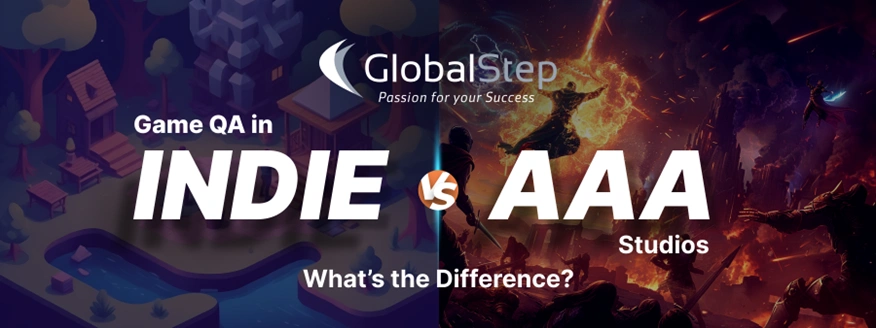
Quality Assurance (QA) can make or break a game’s launch. The process, however, is not a “one size fits all” situation; it varies a lot between indie studios and AAA giants, impacting developers, publishers, and players.
The Scope and Scale of Testing
In AAA studios, a dedicated QA team is essential due to the huge size of projects. Hundreds of testers work on different aspects to ensure every detail is perfect. They check performance across platforms and complex systems, like AI behavior and network stability. This level of testing is critical for games played by millions worldwide.
Indie studios have smaller teams with limited budgets; QA might be handled by just a few video game testers, or even the developers themselves. Focus is on core gameplay mechanics and stability rather than extensive platform testing, unlike AAA studios. This can mean some issues only show up once players get their hands on the game.
Resource Allocation
Resource allocation in Quality Assurance is another major difference between AAA and indie studios. AAA studios invest heavily in advanced tools, automated frameworks, and multiple playtesting rounds, allowing them to catch bugs early and refine the video game continuously.
Indie studios, on the other hand, may not be able to afford such luxury, though it is advisable that they do so. They tend to only test on the launching phase and take feedback from users to pinpoint errors. While this type of action is fairly risky, it is often the only possible one, since the budget is almost always a decisive factor.
Flexibility vs. Structure
Flexibility is one of the major assets of indie studios. The advantage with small teams is that they are able to reverse and handle any problems that may occur. This agility allows indie developers to adapt to change easily without being required to undergo a lot of bureaucratic processes, as seen in big companies.
AAA studios, on the other hand, work with a very defined QA procedure that can include several checks prior to the implementation of changes. This structure guarantees that testing has been completed and that risks have been reduced, but at the same time it poses a major inconvenience in the development cycle for immediate changes, making it very hard to address last-minute problems that may arise.
The Role of Community
In indie studios, community plays a vital role, and it includes Quality Assurance. Many indie developers even release their video games early to the public, in an effort to gain valuable feedback from players and consequently fix any bugs or issues that may arise. This approach is not only incredibly effective, but it also helps foster strong developer-player connections.
AAA studios value player feedback too, but use formal channels like closed betas or external QA firms for bug identification, ensuring the game is ready and polished before its official release. Therefore, AAA studios rely less on community, given the availability of internal resources, unlike in indie studios.
Conclusion: a Tailored Approach
In conclusion, the differences between AAA and indie studios boil down mainly upon resource availability and project goals. While AAA studios benefit from structure and extensive resources, indie studios leverage flexibility and player engagement, ensuring top notch quality and speedy delivery, regardless of the scale involved.
At GlobalStep, we are well aware of the problems faced by indie as well as AAA game development companies. Our tailored, specialized approach ensures we meet the needs and expectations for every project, which allows us to deliver large-scale, AAA game testing for top-tier studios as well as deeply customized, affordable testing solutions for independent studios and mid-sized teams. As a company that specializes in the full video game development lifecycle, we help our clients deliver amazing gameplay experiences, no matter the scale or scope.
Looking to enhance your game’s QA process? Explore our Game QA services and Localization Quality Assurance to see how we can support your development journey.




